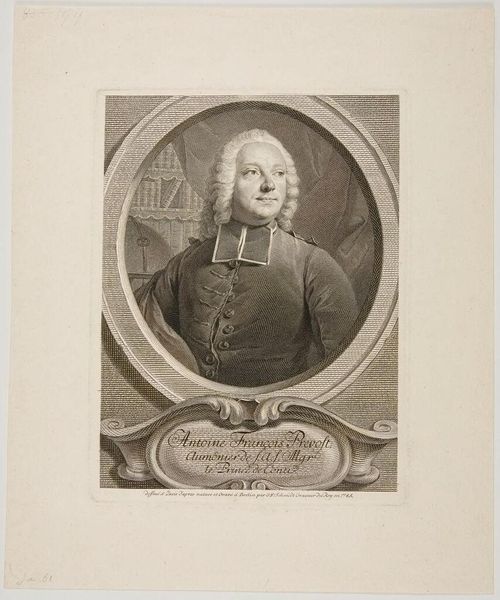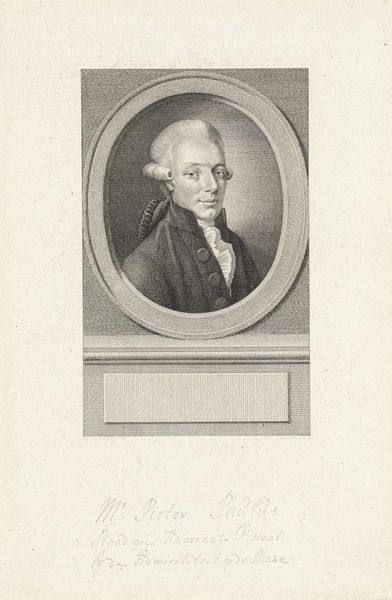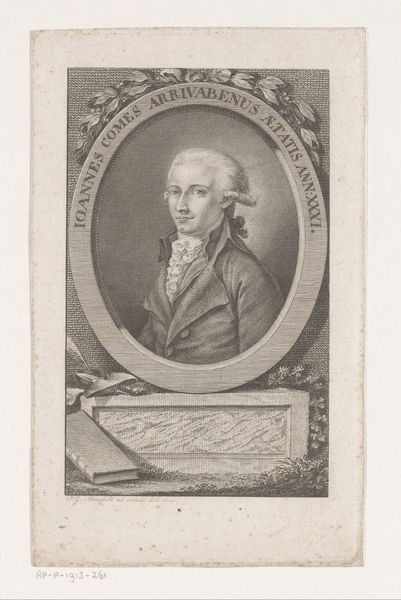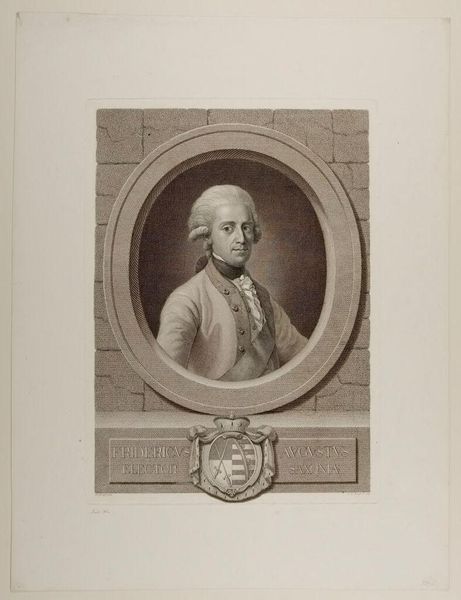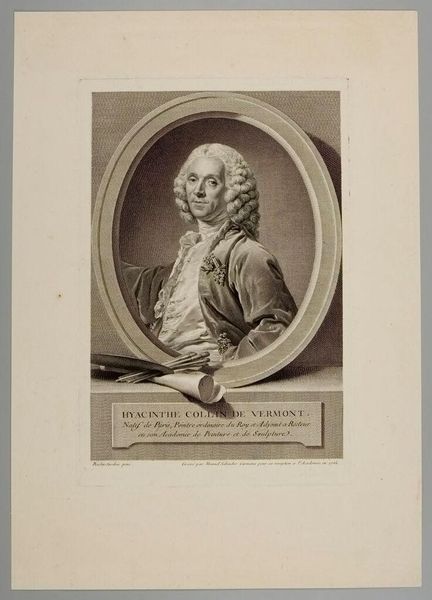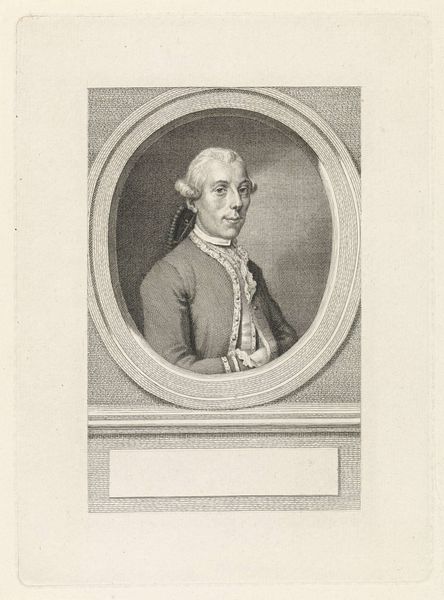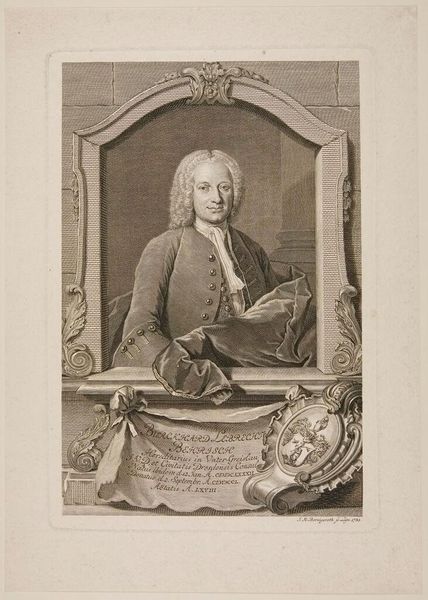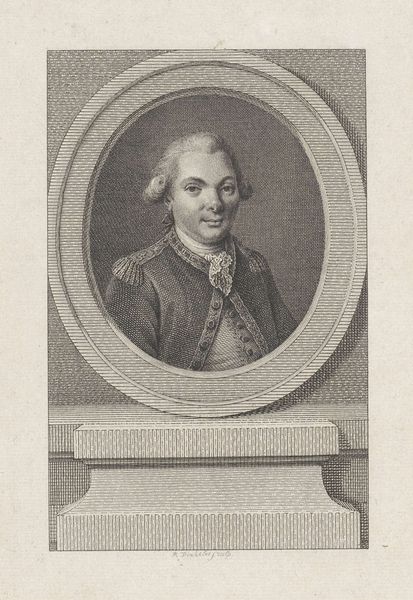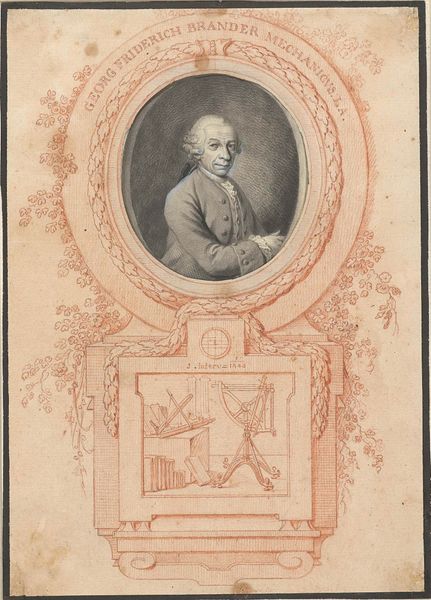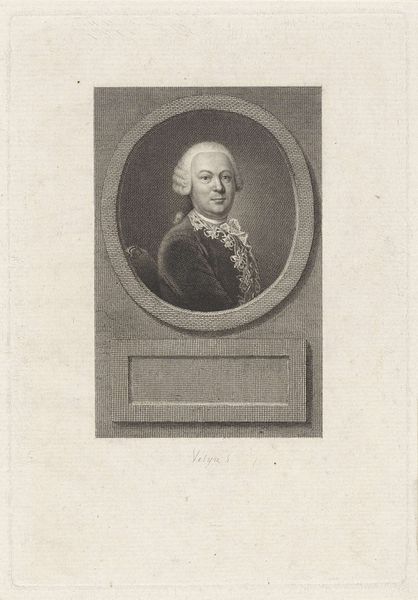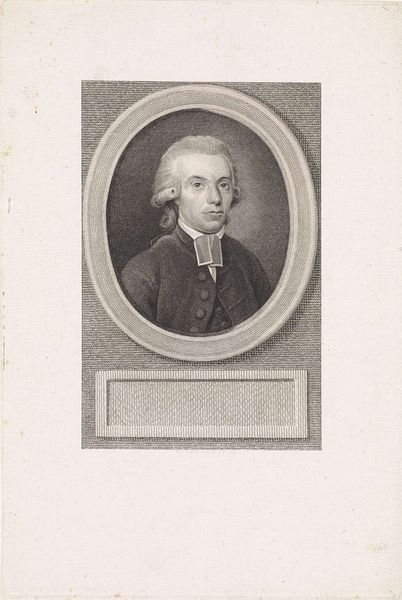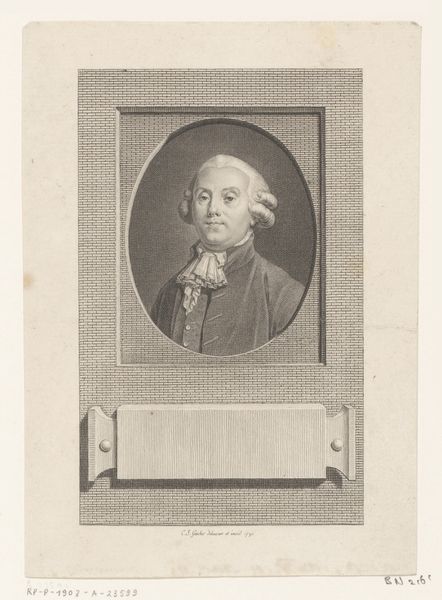
Dimensions: height 351 mm, width 256 mm
Copyright: Rijks Museum: Open Domain
Editor: Here we have "Portret van Heinrich Carl von Schimmelmann," an engraving on paper from sometime between 1782 and 1797. It presents a formally posed gentleman, framed within ornate decorative elements. What stands out to me is the incredible detail achieved with what I presume are simple lines and shading. What do you see in this print? Curator: Precisely that detail is most compelling. Observe the artist’s control of line – its varying thickness and density that simulate three-dimensionality on a flat surface. Note, as well, how the framing device is itself contained within the larger rectangle of the page; a sophisticated play with levels of representation. How do the circular and rectangular frames relate? Editor: That's interesting! It's like the artist wants us to appreciate the illusion, emphasizing that it's still an image on a piece of paper. I hadn't considered that relationship before, I was so focused on the figure within. Curator: Indeed. The very visible technique compels our gaze. Also consider how the tonal gradations create the illusion of light falling across the figure's face and clothing. Notice that even the subtle variations contribute to the realism. Editor: Right, now that you mention the light, I see how the artist strategically used the gradations to bring out certain features like the cheekbones and his gaze, which seems very deliberate. Curator: Yes, the light directing our eye! The way the artist plays with texture also strikes me – the smooth face versus the detailed fabric. Such contrasts contribute to the aesthetic interest beyond the representational function. Do you agree with this compositional contrast? Editor: Absolutely, it brings attention to certain textures in a visually appealing way. Thanks for helping me break down the complexities and appreciate it. Curator: My pleasure, reflecting on formal composition allows new readings and interpretations.
Comments
No comments
Be the first to comment and join the conversation on the ultimate creative platform.
